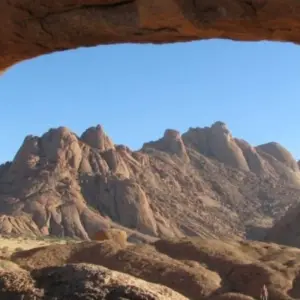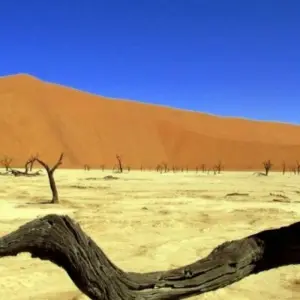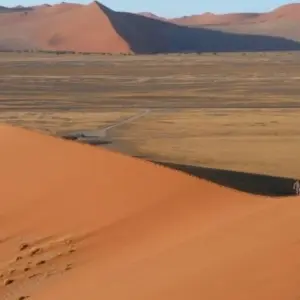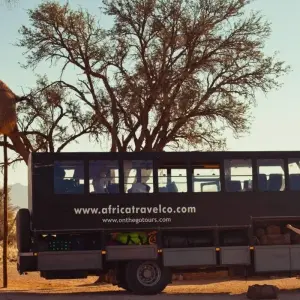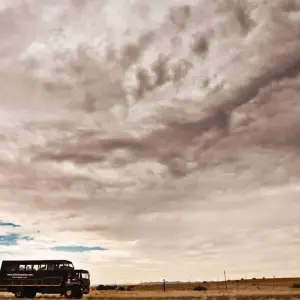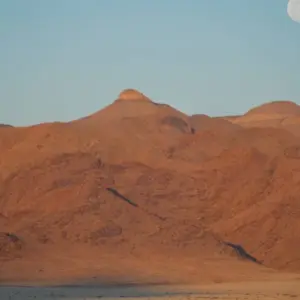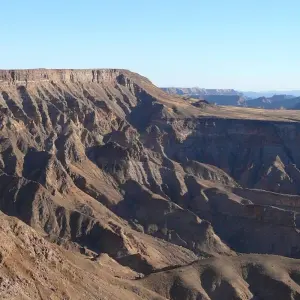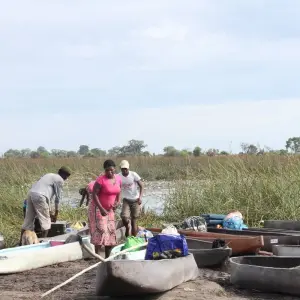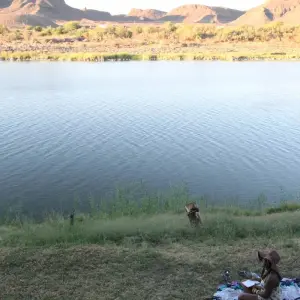Starting in the mother city, Cape Town has much to offer, such as the flat-topped Table Mountain, which is awesome for hiking and providing you with an aerial view of Cape Town. Then there is the pulse of the city – Long Street, which will provide you with all the food and entertainment needed on holiday. If that does not fulfil your holiday needs, the Cape area can provide you with a full day of education, sightseeing, breathe taking views and wine when partaking in a Winelands tour. We will be heading out to do the Cape Point Tour, whilst in Cape Town. A saying that will forever stick by us Capetonians – You don’t need a holiday, you need Cape Town. These two nights we will be staying in dorm rooms at Never@home (or similar) with shared bathroom facilities.

Cape Town To Nairobi 43 Days Overlanding Camping
Itinerary
This trip offers culture, wildlife and some of the most spectacular scenery to be found in Africa. We travel from the mother city of Cape Town to the bustling capital of Nairobi. We leave the breath-taking Table Mountain behind us as we go on search for the mighty big 5 after exploring the beauty of Namibia. Relax on the white sands of Zanzibar before entering some of the world’s best game parks.
Tour program
Cape Town (no meals)
Cape Town to Cederberg Area (Lunch / Dinner)
We head around Table Bay and continue north through the wheat growing ‘bread basket’ of South Africa. We cross the Piekenierskloof Pass into the rich fruit growing area along the Olifants River, named for the vast Elephant herds that used to roam in this fertile valley. Tonight we camp at Highlanders camp with shared ablution facilities (or similar), with a view of the surrounding wine farms. Tonight campers camp under a canvass of stars- the perfect way to begin our African adventure.
Cederberg Area to the Gariep River (Breakfast / Lunch / Dinner)
From the Cederberg, we travel further north through the region known as Namaqualand, well known for its prolific display of Namaqua wildflowers that occur each spring. After stopping for supplies in the small mining town of Springbok, we continue on through the desert area of the Richtersveld to the Gariep River, the natural land border between South Africa and Namibia, where we camp at a beautiful campsite called on the South African bank of the river.
NAMIBIA
This sandy yet spectacular country gained its independence from South Africa in the year of 1990 and its largest city, also the capital city, is Windhoek. This is a country of compelling beauty and wide horizons dominated by the brooding and desolate Namib Desert, which has the highest sand dunes in the world.
Gariep River to Fish River Canyon (Namibia) (Breakfast / Lunch / Dinner)
Today we cross into Namibia where, after a short drive, we reach the Fish River Canyon. At 161 km long, 27 km wide and about 550 m deep, it’s the second largest canyon in the world. The outer canyon was formed by tectonic activity, while the erosion of the Fish River formed the inner canyon. A road follows the eastern rim, giving us access to several viewing points from where we enjoy the spectacular vistas. Tonight campers will camp at Canyon Roadhouse (or similar) with shared ablution facilities.
Fish River Canyon
Located in the South of Namibia, the Fish River Canyon claims the title of the largest canyon in Africa and the second largest in the world. Being approximately 160km long, 27km wide and just over 550m deep only allows for the brave and fit to take on the hikes and walks it has to offer.
Fish River Canyon to Sesriem (Breakfast / Lunch / Dinner)
An early start today, heading north we enter the area of the Namib-Naukluft desert, one of the oldest in the world. We base ourselves at Sesriem, a good place to experience the Namib and its many moods. A short distance away is Sossusvlei, surrounded by a dramatic sea of sand dunes reputed to be the highest in the world. Magnificent views of the desert can be seen from the top of the dunes, some over 300 m high. Make sure you look up at the stars tonight; the desert puts on a show like nowhere else in the world! Tonight and tomorrow night we camp at Oasis Camp (or similar) with shared ablution facilities.
Sesriem (Breakfast / Lunch / Dinner)
This morning we enter the Namib-Naukluft National Park where we spend the morning exploring this amazing area. We take some time to climb to the top of Dune 45 - a truly memorable experience. Following our once in a lifetime experience you will take the desert shuttles a further 5kms into the desert where you can take a walk to Sossusvlei and explore the surrounding area.
Sossusvlei – Sesriem Canyon
This salt and clay pan is surrounded by never ending sand dunes which form part of some of the highest dunes in the world. If all these dues had the ability to be jealous, then they would all be jealous of Dune 45, due to its stunning view of the sunrises and sunsets and its photo geniality. Not being one of the largest or most popular canyons, Sesriem Canyon makes up for it with character. The name Sesriem was given to it by the settlers and is Afrikaans, it can be translated into “six belts”. After coming back from their treks, the settlers would have to tie six belts together, attached to a bucket, in order to scoop water from the canyon.
Solitaire – Tropic of Capricorn – Swakopmund
Consisting of a fuel station, post office, small general dealer and a bakery, Solitaire may be small, but it sure lacks no character. After filling your belly with some of the best apple pie, your next stop is the Tropic of Capricorn. The board marking the tropic may be one of the most photographed boards in Namibia, followed closely by the Namibian border signs (which are technically prohibited), but people manage to sneak one or two in. Swakopmund has become the adventure capital of Namibia, while the city of Windhoek is the Capital. Any adventure junkie will be attracted to Swakopmund, whether they want to jump out of a perfectly good plane or try their luck at sand boarding.
Swakopmund (Breakfast)
After breakfast, we head off in a north-westerly direction to meet the Atlantic Ocean at Walvis Bay. Our drive takes us across the Tropic of Capricorn – the ‘imaginary line’ that shows the southernmost point of direct sun, and signals the southern hemisphere’s mid-summers day. From Walvis Bay, we follow the coast for some 35 km to arrive at Namibia’s prime holiday resort - Swakopmund where we enjoy 2 nights of rest, relaxation and a little bit of adrenalin for those that are keen! Accommodation will be at Amanpuri Lodge (or similar) in dorm rooms with shared bathroom facilities for the next 2 nights.
Swakopmund (Breakfast)
Founded by the Germans in 1892, their colonial influence is still evident today. Swakopmund has a selection of excellent coffee shops, restaurants & bars as well as many arts and crafts shops selling Namibian curios. There are fine beaches to walk along as well as a great museum, aquarium and galleries to visit. Alternatively, the lovely beach and promenade make for a great relaxing walk – though bathing in the ocean waters may be somewhat chilly!
Optional Activities: Sky diving, quad biking, sand boarding, scenic desert flights, dolphin cruises, fishing trips, golf, horse riding and more. An activity briefing will be held on arrival in Swakopmund.
Brandberg (UIS) (Breakfast / Lunch / Dinner)
Our departure from Swakopmund takes through the ‘Matterhorn of Namibia’ – Spitzkoppe (day trip). The 1728m high rock formation, one of Namibia’s most recognised landmarks, is well known as an ancient San sacred site. Explore the surrounding area and its San rock paintings or simply enjoy the magnificent views. After our visit to Spitzkoppe we head off to our next destination – Brandberg. Tonight campers camp at Brandberg Rest Camp (or similar) with shared ablution facilities.
Etosha Area (Breakfast / Lunch / Dinner)
Today’s drive takes us further north through the Namibian countryside to our campsite, located in the vicinity of the National Park. Covering 22 700 km2, Etosha is Namibia’s premier nature and wildlife reserve. Situated around the Etosha Pan with a large variety of animal and bird life, the extensive network of gravel roads affords us the opportunity of accessing even the most remote areas of the park. For the next three nights campers will camp at Etosha Village (or similar) with shared ablution facilities.
Etosha Area (Breakfast / Lunch / Dinner)
We spend the day exploring the park’s southern area. Keep an eye out for the striking Oryx and Springbok as these are endemic to desert National Parks!
Etosha National Park (Breakfast / Lunch / Dinner)
Today we make our way across the park, keeping a look out for the many different mammals, reptiles, birds and insects in the various regions. As the vegetation types change, so does the animal and bird life that relies on it, and so different sections of the Park offer a variety of different game options.
Windhoek (Breakfast & Lunch)
After our breakfast, we head out of the park while doing a game drive. Today’s drive will take us through small rural towns and scenic landscapes. Nestled between the hills, Windhoek is a rather small capital city but has many places of historical interest. This afternoon is spent at your leisure with time to visit the local museum or haggling at the street side markets. There are also many shops for those in need of a bit of retail therapy. Tonight we stay in twin-share rooms at Avani Hotel (or similar) with en-suite bathroom facilities.
BOTSWANA
The size of this successful country can be compared to countries such as Kenya or France, and fairly smaller than Texas. Botswana is a landlocked country with borders such as South Africa, Namibia, Zambia and Zimbabwe which can all be crossed overland. For such a small country, it boasts an array of spectacular game viewing opportunities such as, hundreds of elephants splashing in the Chobe River and the Okavango Delta and its maze of lagoons.
Windhoek to Ghanzi (Botswana) (Breakfast / Lunch / Dinner)
This morning we depart early as we prepare to leave Namibia behind us as we enter into the beautiful Botswana. Ghanzi is a town in the middle of the Kalahari Desert. Optional activities include a number of activities to interact with the San / Bushman, and to discover how they survived in the Kalahari. Tonight campers camp at Tautona (or similar) with shared ablution facilities.
OKAVANGO DELTA
The Delta is a huge expanse of water, which has travelled from the Angolan highlands, spreading out to form the largest inland delta in the world. Studded with exotic islands, The Delta is renowned for its incredible variety of bird life and animals and is unique to Southern Africa.
All you have to do is sit back, relax and have your camera as you get guided through the dozens of mazes. The Okavango Delta is a bird lover’s paradise enjoyed by all, best explored by foot and mokoro. With over 400 species of birds, 70 species of fish and an abundance of wildlife, your experience in the delta will leave you wanting to explore the whole of Africa.
Ghanzi to Maun (Botswana) (Breakfast)
Maun is the starting point for travel into the Delta and it is from here that we set off to explore the Okavango Delta. Your trip leader will brief you fully on what is needed, and what to expect prior to your trip to the Delta. For the next 2 nights campers will be camping at Situtunga (or similar) with shared ablution facilities.
Maun (Breakfast / Lunch)
Here we have the opportunity to take the included excursion into the Delta. From Maun we drive north for a couple of hours to reach the mokoro poler’s station. The Delta region is studded with many local villages where many families live in a traditional way. Some of the villages are very remote and can only be reached by the traditional mode of transport – the Mokoro. Mokoros are dugout canoes manoeuvred through the waterways by local guides who “pole” them through the reeds. At the Mokoro station, we meet our ‘Polers’ and pack our supplies before heading out into the waterways. After a couple of hours along the waterways, we arrive in the heart of the Okavango.
Maun to Nata Region (Breakfast / Lunch / Dinner)
We leave this beautiful part of Botswana behind us this morning as we depart to the lush campsite called Elephant Sands (or similar) with shared ablution facilities. The drive will take you through a very unpopulated landscape where the donkeys roam freely. Once we have arrived at our campsite you will have the option of partaking in a game drive or a bushwalk. Your crew will provide you with more information.
Nata Region to Kasane (Breakfast / Lunch / Dinner)
We travel north to the town of Kasane where we set up camp on the banks of the Chobe River. The Chobe River forms a border between Botswana and Namibia and Zambia and is the main water source to the Chobe National Park. Elephant, hippo and many bird species can be viewed from the campsite while we watch another glorious African sunset. Listen out for the resident hippos! Tonight campers will be camping at Thebe River Lodge (or similar) with shared ablution facilities.
ZIMBABWE
This landlocked country is situated in the southern part of Africa, between the mighty Zambezi and Limpopo Rivers. The word Zimbabwe is believed to have two meanings, 1) it is believed the word Zimbabwe is derived from dzimba-dza-mabwe, which means “large house of stone” in the Shona (Karanga Dialect) language. 2) It is also believed to be derived from the word dzimba-hwe which means venerated houses in the Zezuru dialect of Shona.
Kasane to Victoria Falls (Zimbabwe) (Brunch)
Once returning to camp, we get back on our truck and continue to the border of Zimbabwe. Once we’ve completed border formalities, we have a short drive to the nearby Victoria Falls. Named after the famous World Heritage site and Water Falls, the town of Victoria Falls is situated on the Zambezi River and surrounded by the Victoria Falls National Park. Our accommodation is conveniently situated in the centre of town, and within walking distance of the adventure booking agents, restaurants and shops. A short walk down the main road takes you to the entry point to view the falls, which are situated between Zimbabwe and Zambia. Victoria Falls, or Mosi-oa-Tunya (the Smoke that Thunders), was named by David Livingstone on his explorations, and is one of the Seven Natural Wonders of the World. At 1700 m wide and around 100 m high, this is the world's largest sheet of falling water and a memorable sight on any African Safari! Entry to Victoria Falls National Park is included in your trip. After our adventure activities briefing, the afternoon is spent relaxing at our accommodation, viewing the Victoria Falls, or exploring the many sights and delights of this town!
The next 4 night’s campers will be camping at Shearwater Lodge (or similar) with shared ablution facilities.
Victoria Falls (Breakfast on both days)
The next days are spent relaxing or participating in a myriad of Optional Excursions. Some of our fellow passengers will leave us in Vic Falls, to be replaced by new passengers joining us for the next leg of our trek.
Optional Activities: Adrenalin junkies can bungee from the Victoria Falls Bridge connecting Zimbabwe and Zambia or abseil down the Batoka Gorge - neither activity is for the faint hearted! All year round, flights in fixed wing, micro light and ultra light aircraft or helicopters provide an aerial perspective over this magnificent World Heritage Site. White water rafting on the Zambezi is world class. Beside the excitement of the Grade 5 rapids, there are the "floats," where there is time to admire the scenic cliffs and the occasional wildlife on the riverbanks.
Victoria Falls to Lusaka (Brunch / Dinner)
We get back on our truck and continue to the town of Lusaka. Tonight campers are camping at Eureka camp (or similar) with shared ablution facilities.
Lusaka to Petuake (Breakfast / Lunch / Dinner)
An early morning start sees us head north through southern Zambia. As we drive, we pass through a few of the villages and towns of Zambia along the way. Prosperous during the copper boom in the 60’s, Zambia was able to build infrastructure at the main mining and farming communities. After the fall of the copper industry, the country was left virtually bankrupt and existing infrastructure was left to fall to ruin. Due to foreign investment and a rise in the mining industry, Zambia is today once again starting to prosper. The difference is evident in the cities with the availability of foreign stores, banks and imported cars, while the villages and smaller towns are still to catch up. Tonight campers camp at Chimwende Camp (or similar) with shared ablution facilities.
Petauke to South Luangwa (Breakfast / Lunch / Dinner)
This breath-taking park is situated on the Luangwa River in the Eastern part of Zambia, and it is the southernmost of three national parks in this region. South Luangwa was founded in 1938 as a game reserve, 1972 was the year it was declared as a national park, and today it covers over 9000 kilometres squared. Animals such as Giraffe, buffalo and Elephants can be found in abundance. The Luangwa river is home to many a hippo and croc. Tonight campers are camping at Croc Valley Camp (or similar) with shared ablution facilities.
MALAWI
A variety of attractions can be found in this exquisite country such as, forest, mountains and many a rural village, but there is one major attraction – Lake Malawi. There are many small rustic resorts along this fresh water lake where you can kick back on the sand, and enjoy the perfect sunset over this lake. Malawi will offer you the perfect sub-tropical climate, allowing you ample time to soak up the sun and work on that tan. Lilongwe is the largest city in Malawi, as well as the capital city. Malawi plays host to just over 12 million people, with English and Chichewa being the main languages.
Lake Malawi
Most your time in Malawi will be spent enjoying the white beaches and warm waters of Lake Malawi. Lake Malawi is also known as “the lake of stars”, offering an abundance of water activities. With the staggering amount of 500 species of fish, this lake makes for an excellent spot for fresh water diving after meeting and greeting all the welcoming locals.
Chipata to Lake Malawi (Breakfast)
We cross into Malawi, the ‘Warm Heart of Africa’. Malawi is a landlocked country with 20% of its total area made up of beautiful Lake Malawi. We camp first at the central Lake, and then in the northern area over the next 3 days. These two nights we camp at Kande beach lodge (or similar) with shared bathroom facilities.
Chitimba (Breakfast)
Spend the days learning the game of bao from the locals, scour the markets for a bargain or simply relax on the pristine beaches. Malawi’s temperate climate allows for swimming in the clear blue fresh-water lake all year round. Explore the beautiful shore where you’ll happen upon the local fishermen sorting their catch. Traditional fishing techniques are still practiced and to appreciate their boating skills, try to paddle a dugout canoe yourself! At night, you’ll see the ‘fairy’ lights of the fishermen out on the lake. The various beachside campsites along Lake Malawi’s shores offer many optional Excursions including a variety of water sports, horseback rides and a visit to the local village and school. Tonight we camp at Chitimba Camp (or similar) with shared bathroom facilities.
TANZANIA
Tanzania’s natural environment and geographical features have made it one of the best tourist destinations in Africa. Being the biggest country in east Africa, Tanzania has heaps to offer her visitors, including 13 game reserves and national parks. Tanzania also forms part of the world’s largest animal’s movements, the great migration. Inland are the vast Serengeti National Park and the animal-packed Ngorongoro Conservation area, and thousands of people every year fulfil their lifetime achievement of climbing to the top of Mount Kilimanjaro, which is the highest mountain in Africa. On the coast, Zanzibar is exotic, intriguing and steeped in the unique Swahili culture.
Lake Malawi to Mbeya (Tanzania) (Breakfast / Lunch / Dinner)
After a relaxing 3 days, we leave Malawi, entering Tanzania through the border post at Songwe. Winding our way through the beauty of the Tukuyu tea and banana plantations, we head towards Iringa where campers spend the night camping at Utengule Coffee Lodge (or similar) with shared ablution facilities.
Mbeya to Iringa (Tanzania) (Breakfast / Lunch / Dinner)
From Mbeya we travel to Iringa and camping clients camp at the beautiful rustic ‘Farmhouse’ campsite (or similar) with shared ablution facilities.
Iringa to Mikumi (Breakfast / Lunch / Dinner)
This morning we head off early passing through the Mikumi National Park where it is possible to view a range of wildlife from the roadside, totally impervious to the passing traffic. Look out for the colourful shop-fronts with their sometimes humorous ‘catch phrases’. Tonight we camp at Tan-swiss Lodge (or similar) with shared ablution facilities.
Mikumi to Dar es Salaam (Breakfast/ Lunch)
Tonight we camp at Kipepeo Beach Village (or similar) with en-suite bathroom facilities.
Dar es Salaam to Zanzibar (Breakfast)
A ferry from Dar es Salaam takes us to the "Spice Island,” where we spend the next 3 nights. Zanzibar is steeped in history and was one of the major starting points for most East African explorers in their quest for new lands.
History aside, Zanzibar offers a wealth of experiences for the visitor. Today the quiet streets of the old Stone Town still retain their Arabic influence, from the Medina-like shops to the palaces of the Sultans, who founded their vast empires on the spoils of the slave and ivory trade. The island is famous for its spices and an excursion around a spice plantation is always a fascinating experience. Other options include a trip to the beautiful beaches and giant tortoises of Prison Island, a full day scuba dive in Nungwe or a fishing trip in a traditional dhow. Mopeds are available for hire if you’d like to explore the more remote areas of the island. These two nights we stay in twin-share rooms at Amaan Hotel (or similar) with en-suite bathroom facilities.
PLEASE NOTE: Meals are for your own account whilst on Zanzibar, as it is our experience that passengers prefer to explore the island on their own, and in accordance with their own budget. The Trip Leader joins you and will arrange your activities, while meals can be enjoyed from a wide selection of restaurants. Zanzibar is a seafood lover’s paradise. Numerous restaurants offer a great variety of the freshest catch from the ocean - crayfish being a popular speciality. Alternatively, mingle with the locals for dinner at the Forodhani Gardens seafront market, where delicious, inexpensive seafood is on offer. There are also a wide variety of optional excursions on offer.
Zanzibar (Breakfast)
Today we travel back to the main town & tonight we stay in twin-share rooms at Swahili House (or similar) with en-suite bathroom facilities.
Zanzibar to Dar es Salaam (Breakfast)
Leaving Zanzibar in the afternoon, we return to the mainland and another night in Dar es Salaam. Arrival back to camp is usually in the late afternoon, or early evening. Tonight campers will again camp at Kipepeo Beach village (or similar) with shared bathroom facilities.
38: Dar Es Salaam to Lushoto (Breakfast / Lunch)
This morning we leave early and leave the hustle and bustle of this major Tanzanian city, and head towards the farmlands of this beautiful country. Today is used as a transit day to get us closer to Serengeti. Campers will be camping tonight at the Lawns Hotel (or similar) with shared ablution facilities.
Lushoto to Arusha (Breakfast / Lunch / Dinner)
From Dar es Salaam we have a long day’s drive through vast sisal plantations and African bushveld to Arusha. On the way, we pass The Pare and Usambara Mountain ranges before driving through the town of Moshi. Moshi is the base for Mount Kilimanjaro climbing expeditions and weather permitting; we may even catch a glimpse of this magical mountain’s snowy summit - a photo opportunity not to be missed! Tonight we stay in twin-share rooms at the Outpost Hotel (or similar) with en-suite bathroom facilities, before heading out on our excursions to the Serengeti and Ngorongoro Crater tomorrow.
Arusha to Serengeti National Park (Breakfast / Lunch / Dinner)
This morning we depart early and transit through the Ngorongoro Conservation area and on into the Serengeti National Park. We cross the vast plains as we game drive through the southern and central areas in the park. Tonight and tomorrow night we stay in twin-share rooms at the Golden Safari with en-suite bathroom facilities (or similar) surrounded by the sounds of the African wilderness.
Serengeti National Park to Karatu (Breakfast / Lunch / Dinner)
In the morning, we head off for another game drive and explore the landscape in search of the resident game. With some luck, we may see some of Africa’s ‘Big 5’! Following our morning drive, we retrace our journey back across the plains and along the lush Crater rim.
The Ngorongoro Crater is the largest unbroken, unflooded caldera in the world. Comprising of open savannahs, acacia forests and both soda and fresh water lakes, the Ngorongoro Crater is truly a miniature ‘Garden of Eden’. This World Heritage Site boasts some of the best game viewing in Africa – including the elusive Black Rhino.
We spend the evening musing over our thrilling wildlife experience, camping at Kudu camp (or similar) with shared ablution facilities.
Arusha to Nairobi (Breakfast / Lunch / Dinner)
We set off early this morning and make our way to the Tanzania/ Kenyan border and the small border town of Namanga. After completing the border formalities, we continue on our journey to the Capital City Nairobi where our trip ends.
The rest of the day is yours at leisure to enjoy some of the many options available in this bustling city; visit The David Sheldrick Wildlife Trust, where you can view the orphaned baby Elephants at feeding time, or head to the Giraffe Centre in Langata, if you haven’t had your fill of game viewing, then Nairobi National Park offers some great day trips or if you haven’t quite got all those souvenirs you wanted, take a “Matatu” to the local curio markets close by the campsite. This evening why not try the fair on offer at the famous Carnivores restaurant.
Cancellation Policy
BOOKING TERMS AND CONDITIONS
1. DEFINITIONS & PARTIES
a) In these Booking Conditions, the “Company” shall mean Africa Travel Co. Ltd. (Reg. Number: Z-47841).
b) The “Client” is the person or persons listed on the Booking Form.
c) A “trip” is any tour, trip, safari, expedition or combination of sections that has its own Trip Name and Trip
Code as reflected in both the brochure and on the website.
d) “Force Majeure” means any situation or event that is beyond the Company's control. This could be war,
riot, civil strife, terrorist activity, and industrial disputes, natural or industrial disasters, fire, adverse weather
conditions or Acts of God. It could also include governmental obstacles and changes to local transport
operators schedules (like ferry companies.)
2. CONTRACT
a) No contract shall exist between the Company and the Client, until the Company:
receives a signed Booking Form
receives a non-refundable deposit or 25% (twenty five percent) of the Trip Price
receives a signed copy of the Booking Terms and Conditions
issues the Client, or their travel agent, a written confirmation
b) A contract is entered into between the Company and the Client. The person who signs the Booking
Form represents and warrants to the Company, that they are authorised to sign the form and accepts all
these conditions on behalf of themselves and each of their travelling companions including any minors
who may be accompanying them.
c) No persons, organisation or employee of the Company has any authority to vary these Booking
Conditions. Neither do they have any authority to alter any information printed in the brochure or on the
website.
d) The Company and its agents reserve the right to decline any booking. The Company also reserves the
right to cancel any booking at its discretion in the event the Company believes the Client to be unsuited
to the trip booked.
e) Should any of these Terms and Conditions be held to be invalid, unlawful or unenforceable, such Terms
and Conditions will be severable from the remaining Terms and Conditions, which will continue to be
valid and enforceable. If any Term or Condition held to be invalid is capable of amendment to render it
valid, the parties agree to negotiate an amendment to remove the invalidity.
f) This contract (including its validity, existence and implementation, the interpretation and application of
its provisions, the respective rights and obligations of the parties in terms of and arising out of the
conclusion, breach and termination of the provisions of this agreement), shall be interpreted and
governed in all respects by the laws of England.
3. PAYMENTS
a) A non-refundable deposit of 25% (twenty five percent) of the Trip Price is required from each Client when
submitting the Booking Form to confirm the booking. This deposit will only be refunded if the Client
cannot be accommodated.
b) The balance of the Trip Price due by the Client to the Company shall be payable not less than 42 (forty
two) days prior to the date of a trip’s departure.
c) If the full amount is not received in the due time, the Company reserves the right to treat the booking as
a cancellation and the Client will be subject to the Cancellation Fees detailed below.
d) Payment made to an agent does not guarantee the booking, should that agent default in payment to
The Company.
e) The Local Payment (where applicable) must be paid is US$ (United States Dollars) cash to the Trip Leader
at the Pre-Departure Meeting, usually the night before the trip’s departure. This payment forms a part of
the overall trip price and failure to do so will constitute a breach of contract by the Client and the Client
will not be allowed to join the trip.
4. CANCELLATIONS
a) Any cancellations made by the Client must be in writing to the Company. The date on which the
correspondence is received by the Company will determine the Cancellation Fees.
b) Fees applicable in the event of a cancellation will be as follows:
Days Prior to Departure.........% of Trip Price
More than 42 days............25 %
42 to 28 days.......................35 %
27 to 14 days.......................50 %
13 to 7 days.........................75 %
Less than 7days.............. 100 %
c) Should the Client fail to join a trip, or join it after departure or leave it prior to its completion, no refund will
be made whatsoever, including the Local Payment portion that is not used.
d) The Company reserves the right to cancel any trip for any reason more than 42 (forty two) days prior to
the departure date. In this case the Client will be refunded any money they have paid to the Company
and that will be the extent of the Company’s liability.
e) The Company reserves the right to cancel any trip for reasons of Force Majeure less than 42 (forty two)
days prior to the departure date. In this case the Client will be refunded any money they have paid to
the Company, less reasonable expenses the Company has incurred, and that will be the extent of the
Company’s liability.
Some of our trips require a minimum number of Clients in order for it to run. If this number is not reached,
we reserve the right to cancel the trip. The Company will endeavour to cancel this trip more than 42
(forty two) days prior to the departure date unless it is necessitated by the late cancellation of other
passengers on the trip, in which case it will be cancelled less than 42 (forty two) days prior to the
departure date. In each case, the Client will be refunded any money they have paid to the Company
and that will be the extent of the Company’s liability.
g) Should the Client fail to pay the balance of the Trip Price in the due time, the Company will cancel the
booking and no monies already paid to the Company will be refunded.
h) The Cancellation Fees detailed above are only in relation to the Trip Price and do not include any extra
services booked like Airport Transfers and Accommodation. These cancellation fees may be as high as
100% (one hundred percent) and the Client is still liable for their payment.
5. TRANSFERS AND AMENDMENTS
a) If the Client wants to transfer from one trip to another, the Company must be informed in writing. The
Client must complete and sign a new Booking Form and, if necessary, provide an additional deposit (if
more than 42 (forty two) days prior to the trip’s departure) or balance of Trip Price (if less than 42 (forty
two) days prior to the trip’s departure.) The date on which the correspondence is received by The
Company will determine the transfer charge.
b) Charges applicable in the event of a transfer will be as follows:
Days Prior to Departure........% of Trip Price
More than 42 days..............0 %
42 to 28 days.......................35 %
27 to 14 days.......................50 %
13 to 7 days.........................75 %
Less than 7days.............. 100 %
c) Any non-recoverable expenses are not included in the Transfer Fee and the Client will still be liable for
these.
d) The Client cannot transfer their trip to another person.
6. PRICES
a) The Company reserves the right to change their rates at any time prior to the contract being entered
into. In the event that these rates are altered, the Client will be advised at the time of booking.
b) The Company endeavours not to increase the cost of the trip once the contract has been entered into.
However, the cost to run a trip is calculated up to 18 (eighteen) months in advance and increases in
running the trip like, but not exclusively, transportation costs, accommodation costs and fluctuations in
the exchange rates, may make an increase unavoidable.
c) Should a surcharge be payable, the Company will immediately notify the Client of such.
d) The Company will not add a surcharge to a trip less than 28 (twenty eight) days prior to a trip’s
departure.
e) The Company will not impose a surcharge of more than 20% (twenty percent) of the original Trip Price.
f) Should a surcharge be payable, the Client must pay said surcharge prior to joining the trip.
g) The Client must pay the Local Payment contribution for the Discounted Trip.
h) Discounts offered are on the trip price of the trip only, and only one discount may be applied to each
trip. This applies to promotions and specials offered by the Company or any of its representatives.
i) Different sales prices are calculated in various currencies in advance of printing the sales brochure. Due
to fluctuations, prices in various currencies may vary as a result. The Company, and it’s representatives
will not be held liable to refund based on these variances, and the Client will be responsible for settling
all outstanding amounts owed in the currency based on their booking origin, or that of their agent.
7. ITINERARIES
a) The documentation provided by the Company (e.g. Trip Dossiers, Brochures, Website, etc.) is set out in
good faith as statements of intent only and changes to the itinerary, vehicle and equipment use, etc.
may be made where deemed necessary by the Company.
b) Any additional expenses, incurred through deviations to the itineraries because of Force Majeure or
reasons considered advisable by the Company will be for the Client’s account.
c) The Client accepts that Force Majeure may preclude the Company from providing services or following
the itinerary as detailed in the Trip Dossier.
d) The Company will not refund any monies paid for unused services which are included in the Trip Price.
e) As of January 2014 the Trip includes an arrival airport transfer and one pre-night accommodation per
person in a dorm room, or similar where dorms are not available. Should the Company not receive the arrival details in order to book the transfer and dorm accommodation, no refund whatsoever will be
made for this service.
8. CHANGES
a) The Company reserves the right to make changes to the trip any time prior to the contract being
entered into. In the event that any aspect of the trip is altered, the Client will be advised at the time of
their booking.
b) The Company endeavours not to make changes to the trip once the contract has been entered into.
However, because of the unpredictability of travel in many of the areas visited, changes prior to a trip’s
departure may be unavoidable. Where this alteration is significant (i.e. where a major deviation to the
itinerary is made) the Company undertakes to inform the Client as soon as possible.
c) Due to the nature of the areas we travel through significant changes can and do occur after a trip’s
departure, over which the Company has no control. The Company will make alternative arrangements
like changing the method of transport and/or the itinerary if Force Majeure, breakdowns, accidents,
sickness, etc. necessitate such a change. The Company cannot be held responsible for compensation
or additional expenses incurred due to any such change.
9. COMPLAINTS
a) If the Client has a complaint about the trip, such complaint must immediately be raised with the Trip
Leader or the Company’s Head Office so that, if possible, a solution can be found.
b) Failing resolution, the Client must make any complaint within 28 (twenty eight) days of the trip’s finish date.
c) This complaint must be made in writing.
d) The Company will not be held liable for the loss of enjoyment due to unfulfilled expectations of the Trip
due to the nature of adventure group travel; each trip is unique and reliant on client interaction and
participation.
10. COMPANY RESPONSIBILITY
a) All information in documentation provided by the Company (e.g. Trip Dossiers, Brochure, Website, etc.)
has been set out with reasonable care and is published in good faith. Where the Company is acting as
an agent on the Client’s behalf (e.g. when booking facilities/services used before, during the course of
or after the trip), it does so on the explicit condition that it cannot be held responsible for any loss,
damage, injury, additional expenses or breaches of contract resulting directly or indirectly from the
actions or omissions of the suppliers or independent parties with whom these arrangements have been
made.
b) The Company cannot be held responsible:
If there has been no fault on the part of the Company or its suppliers and the cause was the Client’s
fault or the fault of someone not associated with the trip whose actions were not foreseeable.
If the cause was the fault of unforeseeable circumstances beyond the Company’s or its suppliers
control, the results of which were unavoidable even though every caution was taken.
If the cause was the fault of the Client having taken part in any activity or optional activity which
does not form part of the original trip arrangements, even though they may be supervised, arranged
or recommended by the Company or its representatives (e.g. bungy jumping, rafting, ballooning or
other such activities of a risky nature.)
Where a disease or illness is contracted during or after the trip. Should the Client need to leave the
trip because of such, no refund whatsoever will be forthcoming and the Client will be responsible for
all expenses incurred for the treatment of their illness and as a result of having to leave the trip.
For any information or advice provided by a travel agent unless such information has been provided
to the travel agent by the Company. In the case of such information and advice not having been
provided by the Company, the responsibility must lie with the travel agent.
For a travel agent not providing or providing incorrect advice, information or documents, which the
Company has given to the travel agent, or in the case of negligence by the travel agent.
Where the Company has provided advice and information on travel documents, visas, climate,
spending money, clothing, equipment, etc. This advice and information has been set out with
reasonable care and is published in good faith, but without responsibility on the part of the
Company.
For any advice or information provided by the Company’s crew. This advice and information has
been given in good faith, but without responsibility on the part of the Company.
For any Client’s luggage or personal effects
c) The Company, its employees and agents cannot be held responsible for expenses, inconvenience, loss
of enjoyment or anything else caused by the Client’s non-compliance with any of responsibilities listed
below.
11. CLIENT RESPONSIBILITY
a) The nature of the Company’s trips may involve an element of personal risk and potential hazard not
normally associated with holiday tours. The Client must accept these risks and hazards.
b) The Client must accept that safety standards of suppliers of accommodation, local transport and other
operators in most of the countries visited will not be of the same standard as in their home country.
c) The Client must make themselves aware through the various government agency warnings and
advisories (e.g. British Foreign & Commonwealth Office, US Department of State) with regard to the
safety of countries and areas through which they’ll be travelling and to make their own decisions
accordingly.
d) The Client must arrange suitable adventure travel insurance with benefits that cover personal accident,
medical expenses including repatriation and loss and damage to personal effects. It is suggested
insurance is also taken out to cover any expenses related to the cancellation or curtailment of any trip.
Should the Client not have adequate travel insurance, they may not be allowed to join the trip.
e) The Client is to get professional medical advice before travelling and to take all necessary health
precautions and preventative measures.
f) The Client is responsible for informing the Company, at the time of booking, of any known disabilities or
medical conditions, or, if not known at the time of booking, as soon they become known. Any Client
found to have failed to disclose this information, may be directed to leave the trip. No refund
whatsoever will be forthcoming and the Client will be responsible for all expenses incurred as a result of
having to leave the trip.
g) The Company’s crew have authority to make difficult decisions. Should the Client present a medical
condition, the crew may insist they seek medical advice. If the Client refuses to act upon this advice,
thereby putting the other members of the trip in danger or at risk, the Client may be asked to leave the
trip. This includes physical, mental and behavioural conditions. No refund whatsoever will be forthcoming
and the Client will be responsible for all expenses incurred as a result of having to leave the trip.
h) The Client must check the documents issued for trips and services booked through the Company and
should there be any mistakes, immediately notify the Company of such.
i) The Client must adhere to the trip joining instructions given to them.
j) The Client must comply with all current passport, visa and health requirements needed for each of the
countries the trips travel through.
k) The Client must abide by the laws and customs of the countries visited. The Company has absolute
discretion to direct the Client to leave the trip if they disobey such laws and customs. No refund
whatsoever will be forthcoming and the Client will be responsible for all expenses incurred as a result of
having to leave the trip.
l) The Client must not put the welfare of the group, individual member, members or themselves in
jeopardy. The Company has absolute discretion to direct the Client to leave the trip if this is found to be
the case. No refund whatsoever will be forthcoming and the Client will be responsible for all expenses
incurred as a result of having to leave the trip.
m) The Client must reimburse the Company for any expenses incurred on behalf of the Client.
n) The Client must be aware that the Company’s crew, agents and representatives may take photographs
and film footage throughout the trip. The Company reserves the right to use such media for marketing
purposes without obtaining consent from the Client. The Company also reserves the right to use any
Client comments, either verbal or written, for marketing purposes without obtaining consent from the
Client.
I confirm that I abide by the aforementioned and agree to the Terms and Conditions therein contained. I
record that I am joining a trip or making a booking at my own risk and waive any claims that I might have in
regard to injury, loss or death which might occur due to any causes whatsoever. I refer in particular to any
minor child or children who may be accompanying me and confirm specifically that this indemnity as
signed applies to such child/children. I further bind my dependents, heirs, executors, administrators and
assigns to the Terms and Conditions of this agreement, and indemnify and hold blameless Africa Travel Co.
Ltd, its members, associates, employees, representatives, organisers, helpers and agents from all liability for
any or all claims whatsoever and howsoever arising and without limitation (including consequential claims)
arising from any delay, loss or damage to property or injury or illness or death arising from any cause related
to or occurring during my booking or activities or trips with the Company.
Tour Details
Accommodation
42 nights camping
Participation on tour
All of the tours operated by ATC are participation trips meaning that all passengers are expected to help out around camp. The crew members running the trip will set up a rota system that will be followed. One day you may be on cleaning duty, the next day you may be on cooking duty and so forth. This is not only to make the trip easier for all involved but also for you as the passengers to get to know one another while on trip.
Transport
Our overland vehicles are custom built converted trucks that have seating space for our passengers and a storage area for luggage and all trip equipment. The trucks seat between 24-30 passengers on our camping trips. Most seats are forward facing, though some models have a combination of forward, backward and some inward facing seats with tables. Vehicles have sliding glass windows, and the seating area is raised providing a great advantage for game viewing and photography. Seats are cushioned and there is storage space for personal items like cameras, snacks and day packs in the seating area.
Insurance
Optional
Optional Activities: Sky diving, quad biking, sand boarding, scenic desert flights, dolphin cruises, fishing trips, golf, horse riding and more. An activity briefing will be held on arrival in Swakopmund.
Optional Activities: Adrenalin junkies can bungee from the Victoria Falls Bridge connecting Zimbabwe and Zambia or abseil down the Batoka Gorge - neither activity is for the faint hearted! All year round, flights in fixed wing, micro light and ultra light aircraft or helicopters provide an aerial perspective over this magnificent World Heritage Site. White water rafting on the Zambezi is world class. Beside the excitement of the Grade 5 rapids, there are the "floats," where there is time to admire the scenic cliffs and the occasional wildlife on the riverbanks.
Flights
Flights are not included.
Additional Services
Cape Point Tour, Fish River Canyon, Namib Nauklift National Park, Sossusvlei, Swakopmund, Spitzkoppe, Etosha National Park, Okavango Delta excursion, Chobe Sunset cruise, South Luangwa National Park, Lake Malawi, Zanzibar Ferry, Zanzibar Excursion, Dar Es Salaam, Meserani Snake Park and Cultural museum & Serengeti National Park & the Ngorongoro National Park
Additional Services
Flights, Airport departure taxes departure transfer, visas, meals, water & drinks unless otherwise stated, travel insurance, laundry, personal items, sleeping bag, pillow, tips & bottled water, vaccinations and tests required to enter the countries visited.
Meals
37 breakfasts
20 lunches
13 dinners
2 brunches
Meals and menus vary as food is purchased en-route, and is subject to produce that is available seasonally in the areas we travel through. Our safari cooks are able to offer a wide variety of menus with the ingredients available, even if the produce on offer is not of the same selection as what you may be used to back home.
The breakfast spread consists of bread, spreads and cereals with a hot breakfast every few days. Lunches are mostly prepared en-route with a supply of ‘build your own’ sandwich ingredients available. Dinners are cooked in the evenings on arrival at the campsite. A wide array of dinner menus is on offer during your safari, consisting of curries, stews, pastas, and BBQ’s!
Guide
The services of a guide are included.
All of the tours operated by ATC are participation trips meaning that all passengers are expected to help out around camp. The crew members running the trip will set up a rota system that will be followed. One day you may be on cleaning duty, the next day you may be on cooking duty and so forth. This is not only to make the trip easier for all involved but also for you as the passengers to get to know one another while on trip.
Good to know
Currency
Rand
South Africa


